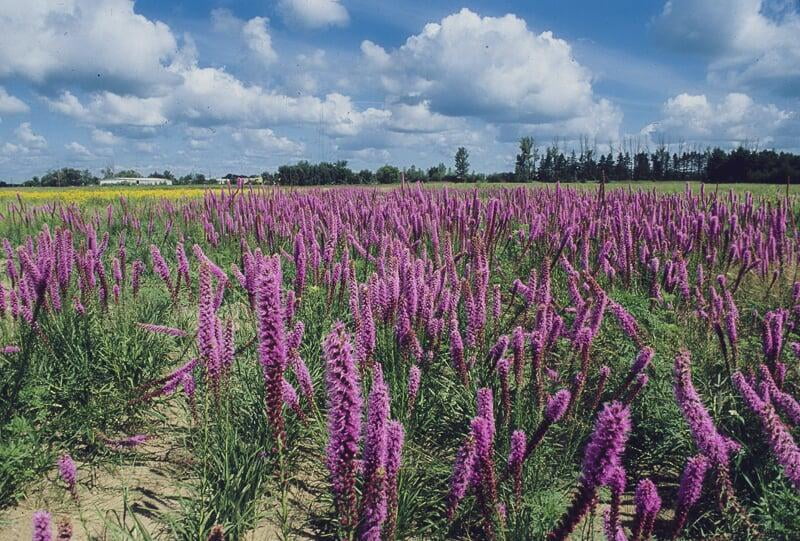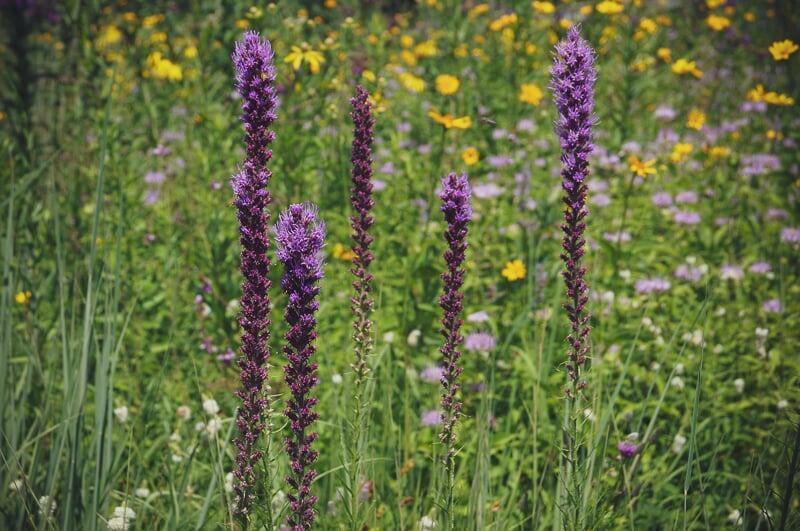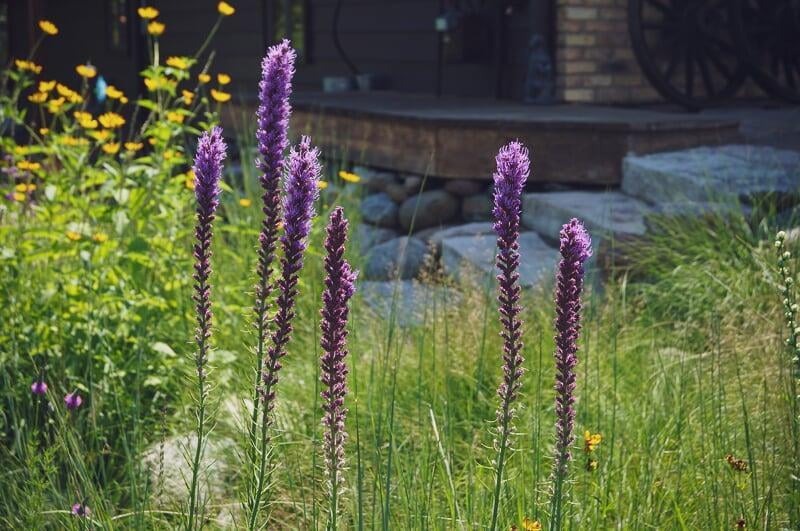Tall Blazing Star
Liatris pycnostachya is a perennial plant that stands out in any garden due to its unique growth pattern and striking appearance. It grows in clumps, with each plant producing one or more tall, upright stems.
Appearance & Growth
Seedling Stage
The journey of Liatris pycnostachya begins as a small seed. Once planted and given the right conditions (moist, well-drained soil and plenty of sunlight), the seed will germinate, usually within 20-30 days. The first visible sign of life is the emergence of the cotyledon, a small leaf-like structure that provides the seedling with its initial nutrients.
As the seedling continues to grow, it will develop its first true leaves. These leaves are slender and grass-like, a characteristic feature of Liatris pycnostachya. At this stage, the plant is still quite small and delicate, and care should be taken to ensure it is not outcompeted by larger plants or weeds.
Juvenile to Mature Plan
As the Tall Blazing Star continues to grow, it will develop a clump of narrow, grass-like leaves at its base. These leaves can reach lengths of up to 12 inches and provide a striking green backdrop for the plant's future flowers.
The plant's stem, or stems if it's producing more than one, will begin to grow upwards, reaching for the sun. These stems are sturdy and upright, capable of reaching heights between 2 to 5 feet. The plant's height, along with its distinctive leaves, make it recognizable even before it begins to flower.
Flowering Stage
The true spectacle begins when Liatris pycnostachya starts to flower, usually in its second year of growth. The plant produces tall, dense spikes of showy, purple flowers. These flowers bloom from the top down, a unique characteristic that sets the Prairie Blazing Star apart from most other flowering plants.
Each individual flower is small and fluffy, with protruding stamens that give it a slightly spiky appearance. The contrast between the vibrant purple flowers and the slender, green leaves is truly striking, making Liatris pycnostachya a standout addition to any garden.
As the flowers begin to fade towards the end of the blooming period, they are replaced by small, fluffy seed heads. These seeds can be collected for future planting or left to disperse naturally, allowing the Prairie Blazing Star to self-seed, and spread throughout the garden.
The growth of Liatris pycnostachya is a fascinating process, from its humble beginnings as a small seedling to its grand finale as a tall, flowering spectacle. Each stage of growth offers its own unique beauty, making the Tall Blazing Star a joy to observe throughout the seasons.
Soil & Water Requirements
Liatris pycnostachya is a hardy plant that can thrive in a variety of soil conditions. It prefers well-drained soil and can tolerate everything from moist clay to dry sand. This adaptability makes it a versatile choice for gardeners dealing with different soil types.
While the Prairie Blazing Star is drought-tolerant, it appreciates regular watering during dry spells. However, it's important not to overwater, as this can lead to root rot. A good rule of thumb is to water deeply but infrequently, allowing the soil to dry out between waterings.
Attracting Pollinators
One of the major benefits of Liatris pycnostachya is its ability to attract a wide variety of pollinators. Its nectar-rich flowers are a magnet for butterflies, bees, and even hummingbirds. Planting Prairie Blazing Star can help support local wildlife and contribute to biodiversity in your garden.
Bees, including both native species and honeybees, are frequent visitors to Liatris pycnostachya. The plant's nectar provides them with essential energy, while the pollen is gathered for protein. The dense flower spikes allow bees to move quickly and efficiently from flower to flower, maximizing their foraging.
Butterflies, particularly the Monarch butterfly, are also drawn to the Tall Blazing Star. The plant's nectar provides a vital food source for adult butterflies. Interestingly, Liatris pycnostachya blooms coincide with the Monarch butterfly's migration period, providing a critical refueling station for these long-distance travelers.
The Tall Blazing Star's bright purple flowers are also attractive to hummingbirds. These tiny birds have a high metabolism and require a significant amount of nectar to sustain their energy levels. The tubular shape of Liatris pycnostachya's flowers is perfectly suited to the hummingbird's long beak, making it an excellent source of nutrition.
Care & Maintenance
In terms of care, Liatris pycnostachya is relatively low maintenance. It prefers full sun but can tolerate partial shade. The plant is also resistant to most pests and diseases, although it can occasionally be affected by fungal diseases if conditions are too wet.
To encourage a healthy and vigorous plant, it's recommended to divide the clumps every few years. This not only helps manage the plant's size but also promotes better air circulation, reducing the risk of disease.
Support Biodiversity
By attracting a variety of pollinators, Liatris pycnostachya plays a crucial role in supporting biodiversity. Pollinators are essential for the reproduction of many plants, including many of the fruits, vegetables, and nuts we rely on. By planting Tall Blazing Star in your garden, you're not only creating a beautiful landscape but also contributing to a healthy and diverse ecosystem.



